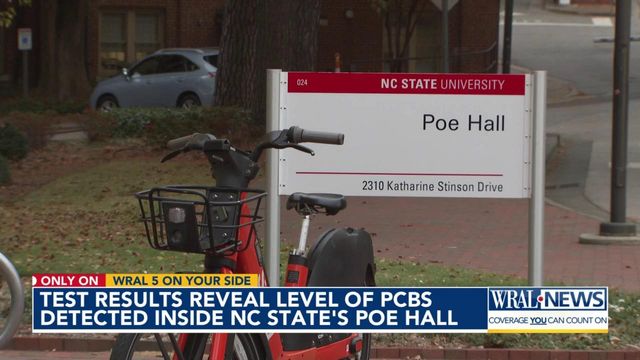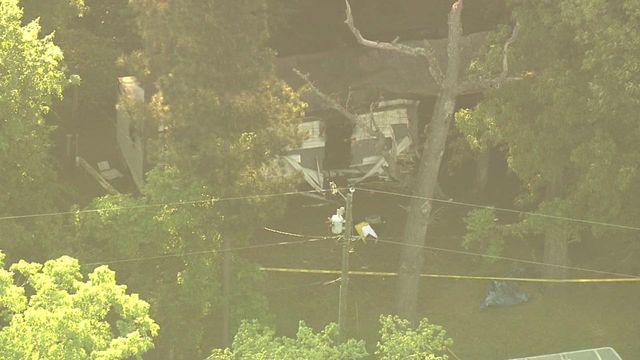Only on WRAL: Documents show PCB levels in NC State's Poe Hall
After more than a month of pushing for documents, WRAL 5 On Your Side has obtained test results showing the levels of cancer-causing PCBs found in NC State’s Poe Hall.
Back on Nov. 16, students, faculty and staff were sent a letter alerting them that the harmful chemicals were discovered.
Since then, the campus community has been asking the university to release the results of the testing that identified PCBs so that they know what they’ve been exposed to. However, officials have refused to release specific details.
Documents WRAL 5 On Your Side exclusively obtained show five PCB test reports the university commissioned from October into November; and varying levels of PCBs in the HVAC system and on surfaces.
"Not every one of those samples showed results at all, but there were a number of the samples that did show results and in some cases, at fairly high concentrations," said Dr. David Carpenter, Director of the Institute for Health and the Environment at the University at Albany.
Want to view the results of the five PCB test reports? Click or tap below
- NC State Poe Hall test results for PCB levels on Oct. 20, 2023.
- NC State Poe Hall test results for PCB levels on Oct. 31, 2023.
- NC State Poe Hall test results for PCB levels from Nov. 9-13, 2023.
- NC State Poe Hall test results for PCB levels on Nov. 10, 2023.
- NC State Poe Hall test results for PCB levels on Nov. 10, 2023.
Carpenter reviewed the results and shared his thoughts on what he saw.
"Some of the wipes showed very high concentrations," he noted. "The bulk samples were extraordinarily high."
"Bulk samples" refers to testing a sample of the possible source of contaminated material.
"Wipes" refers to wiping a cloth with an organic solvent on it over a surface to test for dispursed PCBs.
Carpenter said most of the samples appear to have been taken from the HVAC system, but he noted the PCBs detect in the fifth floor women’s bathroom of Poe Hall struck him as significant.
"Nobody’s crawling up an air shaft, but the restroom has people using that all the time," Carpenter said. "The dust samples on surfaces were almost certainly in areas where people were moving around."
It’s not clear exactly where every sample was taken, so a high reading for PCBs may not mean people were exposed to that level of the chemical.
The tests used were also not very sensitive, according to Carpenter, but they were enough to identify there is a problem.
"As the first cut, this was a totally appropriate way to do the measurements," he said.
Subsequent testing will need to be more precise to fully understand the level of PCBs that people have been exposed to inside Poe Hall.
NC State has promised more extensive testing will happen, and earlier this month announced they’d enlisted a consulting firm to help.
In releasing the testing records to 5 On Your Side on Wednesday, NC State also provided a statement:
"It is important to reinforce that these results are preliminary and limited in scope. However, because some of the results from our testing in the fall were in a detectable range, the university made the decision to proactively close the building and conduct more comprehensive testing in it.
"The preliminary data suggests that the transfer of polychlorinated biphenyls (PCBs) from potential sources to occupied spaces has been limited and that simple cleaning steps can effectively mitigate exposure to PCBs that could be present on surface dust. Further testing of Poe Hall is currently underway. This expanded testing plan includes air and surface wipe sampling in multiple locations throughout the building following protocols recommended by the U.S. Environmental Protection Agency (EPA)."
WRAL 5 On Your Side asked Carpenter, how concerned people that have spent time in Poe Hall should be about these initial test results.
"I think they should be concerned to the level that they would want to have the building evaluated further," he said.












